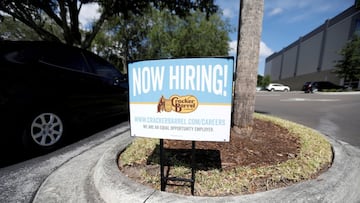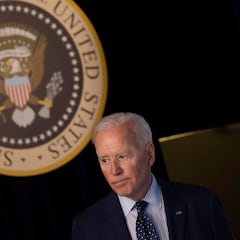June Unemployment Rate: will it affect unemployment benefits?
Unemployed workers in states that will end additional federal benefits this summer wonder if the May jobs report will force leaders to backtrack on their plans.


On Friday, 4 June, the Bureau of Labor Statistics (BLS) released the May Employment Report which showed modest growth in the labor market. While the number of jobs added fell short of expectations, the gap was much smaller than in April. As economists and policymakers awaited the April release, many believed over a million jobs would be added; the actual number ended up being around a quarter of the projected size.
After the lackluster report, Republican governors around the country moved to end all additional federal unemployment benefits this summer to incentivize workers to reenter the labor market. The GOP leaders cited work shortages for keeping workers home.
After the release of the April report, President Biden acknowledged that the numbers were lower than expected but reminded leaders, and the country, that the economic recovery is just beginning. The President’s administration has publicly stated their opposition to the move to end additional benefits, which will end in September, saying that there is not enough data to make an informed decision on whether the extra benefits are keeping people at home.
In light of the May jobs numbers, it is unlikely that Republicans will backtrack on their cancellation of federal benefits. For many in the GOP, the increase in jobs, in part, stems from these announcements as they believe ending the benefits will encourage more people to return to work. Additionally, the BLS has only released the national data. Later this month, the agency will release the state-specific information, which will help understand the impact of this policy change in their state.
In my first four months in office, more than two million jobs have been created.
— President Biden (@POTUS) June 4, 2021
That's more than double the rate of my predecessor, and more than eight times the rate of President Reagan. pic.twitter.com/kINv4ZwOaP
Private sector chimes in
Some in the private sector are also weary of placing federal benefits at the center of the slow growth argument. Rick Rieder, Managing Director of BlackRock, the largest investment manager in the world, posted a thread on Twitter stating his belief that other issues and obstacles are preventing workers from reentering the labor market. These barriers take the form of childcare responsibilities, low wages, and fears over infection which Rieder says create friction to the reentry process.
Today’s #JobsReport witnessed a good seasonally adjusted headline gain of 559,000 jobs but must be understood in the context of how many #jobs are available in today’s #economy and how hard it is to fill them.
— Rick Rieder (@RickRieder) June 4, 2021
Douglas Holz-Eakin, President of the American Action Forum, in part, agrees with Rieders analysis and the potential obstacles workers face. During an interview with Meet the Press he said that efforts should be focused on figuring out “why people are unable to return to jobs they previously had or go search for jobs that are advertised everywhere at increasingly higher wages.” Mr. Holz-Eakin also stated that data available doesn’t explain how much of a role each of these factors play in resistance to reentry but that “as we go forward it will be less and less about the virus and more about the policy.”
WATCH: U.S. economy adds 559,000 jobs in May as labor shortage issue persists. #MTPDaily@djheakin: "This isn't something where you send out stimulus checks and solve the problem. ... As we go forward it's going to be less and less the virus, more and more the policy." pic.twitter.com/YT3blhQ111
— Meet the Press (@MeetThePress) June 4, 2021
Which states have called to end federal benefits?
Montana and South Carolina became the first states to announce they would be ending federal unemployment benefits, including the $300 a week topper to state payments. Few states have outlined how they plan to address other inhibiting factors such as child care responsibilities.
Date Ending |
States |
| June 12 | Alaska, Iowa, Mississippi, and Missouri |
| June19 | Alabama, Idaho, Indiana, New Hampshire, North Dakota, West Virginia, and Wyoming |
| June 26 | Arkansas, Florida, Georgia, Texas, Ohio, Oklahoma, South Dakota, and Utah |
| June 27 | Montana |
| June 30 | South Carolina |
| July 3 | Tennessee |
| July 10 | Arizona |
Related stories
One state that has made an active effort to overcome these barriers is Arizona. When Governor Doug Ducey announced that the state would be ending the payment of additional federal benefits, he also unveiled a set of programs to help workers begin their job hunt. The state will be offering free childcare for three months to workers who find and keep a job. Arizona and a handful of other states have also created a “Return to Work” bonus for those hired and maintain employment for a certain amount of time. These bonuses are a one-time payment and range in value, with most being around $1,000.
Montana and South Carolina became the first states to announce they would be ending federal unemployment benefits. More than twenty states have followed suit.

